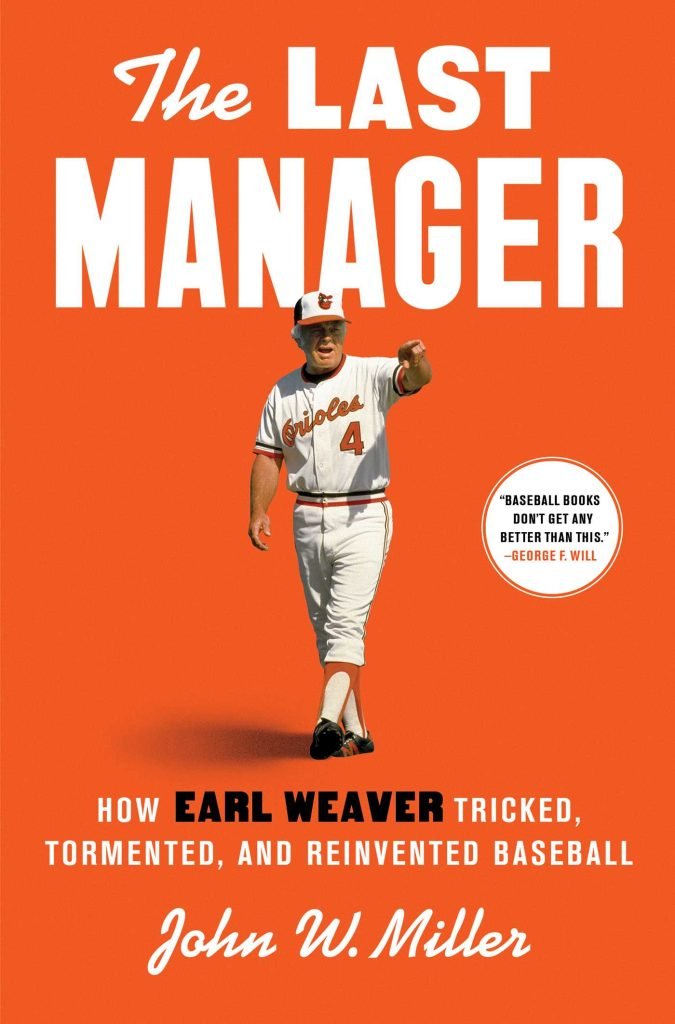

When I get the chance, I hope to read John W. Miller’s book The Last Manager: How Earl Weaver Tricked, Tormented and Reinvented Baseball. The Washington Post is running a short excerpt. Here is a taste:
Weaver changed how baseball is watched, played and managed by relentlessly innovating, introducing new uses of data, pioneering the radar gun and defining the archetype of the umpire-baiting, wisecracking baseball manager, an American cultural symbol on par with the cowboy, the astronaut and the Elvis impersonator.
In 1968, the new skipper’s first significant moves were to promote two Black players, Don Buford and Elrod Hendricks, over two White players, and help a third, Robinson, get his first managing job. These were not political moves: Weaver was interested in winning, not racial justice, but he navigated Baltimore’s racial tensions while the city was recovering from property destruction and deadly street conflict, and his surprising championing of Black players is part of his legacy, and his evolution a reminder of our capacity for change.
Weaver was born in 1930 into an all-White neighborhood in north St. Louis and attended segregated ballgames at Sportsman’s Park. When he was a young man, racial slurs such as the n-word were part of his vocabulary. After signing out of high school in 1948, he played most of his minor league career in the Jim Crow era. The Orioles hired Weaver as a minor league manager in 1957 after his once-promising playing career blew up. As he ascended baseball’s ranks as a manager with the Orioles’ organization in the 1960s, Weaver evolved.
“I came into baseball bearing all of the beliefs and prejudices of a kid from St. Louis,” he wrote in his 1982 memoir with Berry Stainback. “I had little experience with Black people and none with Hispanics, yet I had no problem discovering that some people were good people, whether they attended your church or voted for your candidate or dressed to your style or danced to your music. Baseball gave me the opportunity to open my mind.”
The 1960s and 1970s were the high point of African American players in baseball. In 1968, 15 percent of big leaguers were Black, up from zero in 1946 and 9 percent in 1960. It would top out at around 18 percent from 1975 to 1986. By the 1990s, the rise of the National Basketball Association and National Football League, coupled with the migration of baseball culture to suburban Little Leagues and private travel clubs, diminished participation of Black youth in baseball. Last year, only 6 percent of MLB players were African American.
The Orioles’ Black stars loved Weaver. And he loved them back. Players joked that Hall of Famer Eddie Murray was Weaver’s favorite son. Orioles outfielders in the 1970s — Reggie Jackson, Don Baylor and Ken Singleton — all said Weaver was their favorite manager. Ken Dixon, a Black pitcher for the Orioles from 1984 to 1987, told me Weaver stood out from other White managers and coaches because he held players to a high standard without denigrating them personally.
By contrast, one Orioles coach called Dixon “boy” and spit at his feet. “You didn’t get pats on the back from Earl, and he didn’t pull any punches, but he was still able to tell me he was counting on me,” Dixon said. “He was tough on me, but he talked to me like a man.”
After winning the World Series in 1966, the Orioles had fallen to sixth place in 1967. To have any shot at turning around the Orioles, Weaver needed to win over Frank Robinson. Nicknamed the Black Ty Cobb for his fierceness, the slugger grew up in Oakland, California, and educated at McClymonds High School, along with other superstar athletes such as Bill Russell and Vada Pinson.
Read the entire piece here.